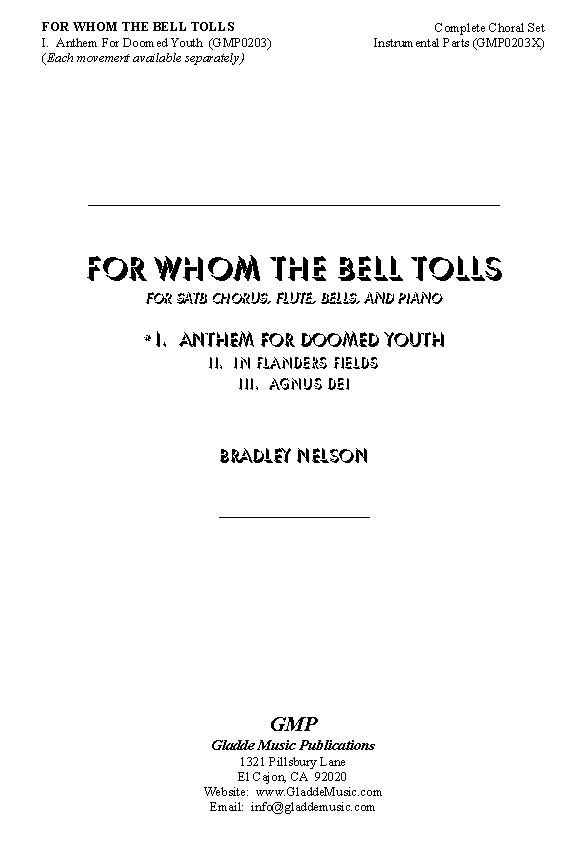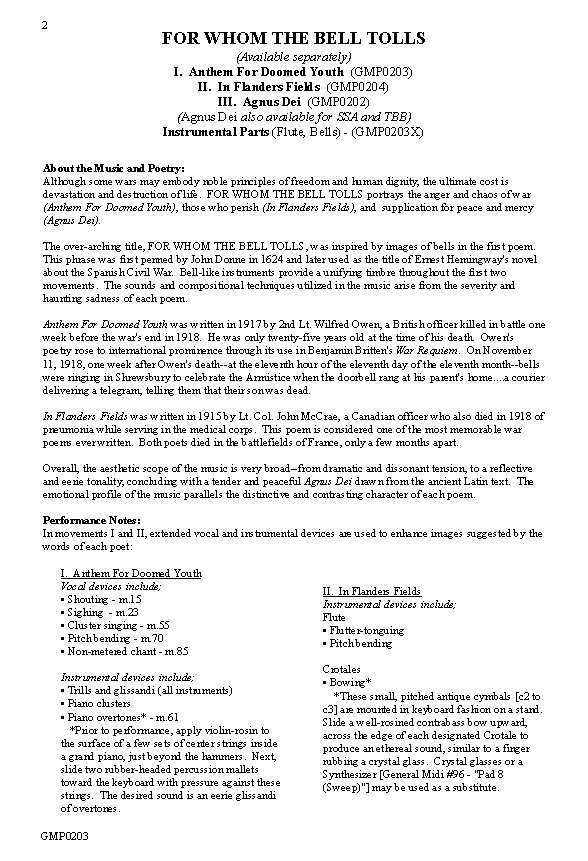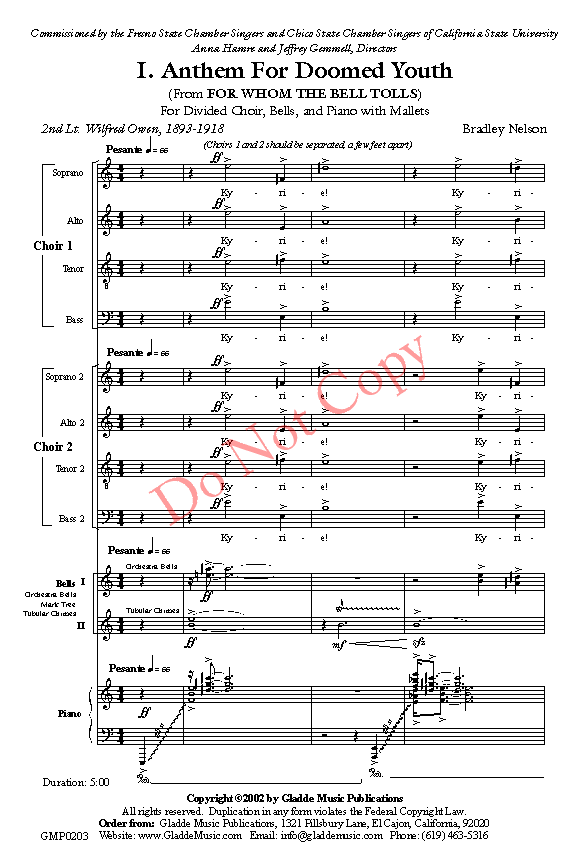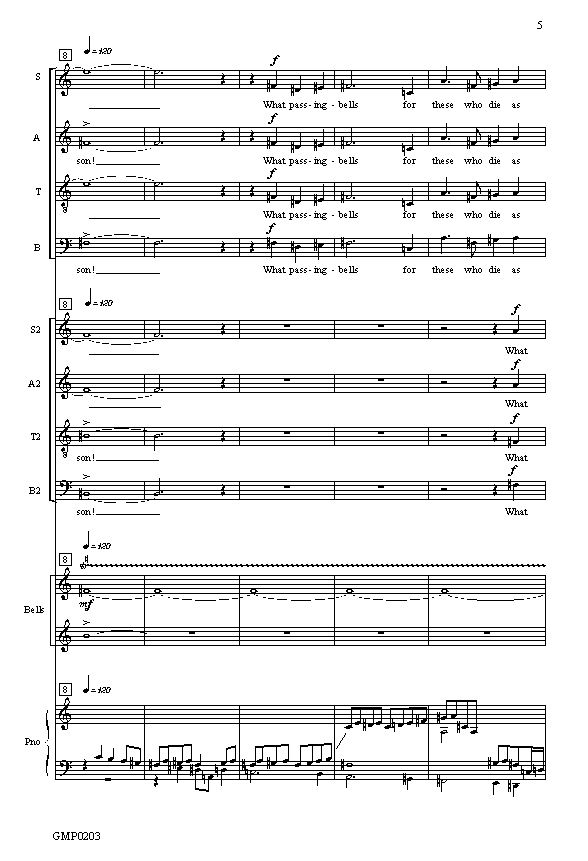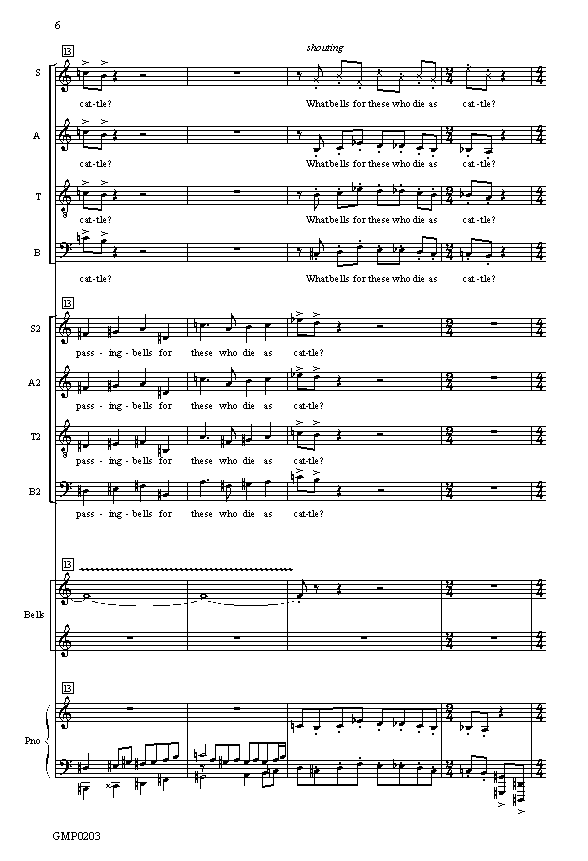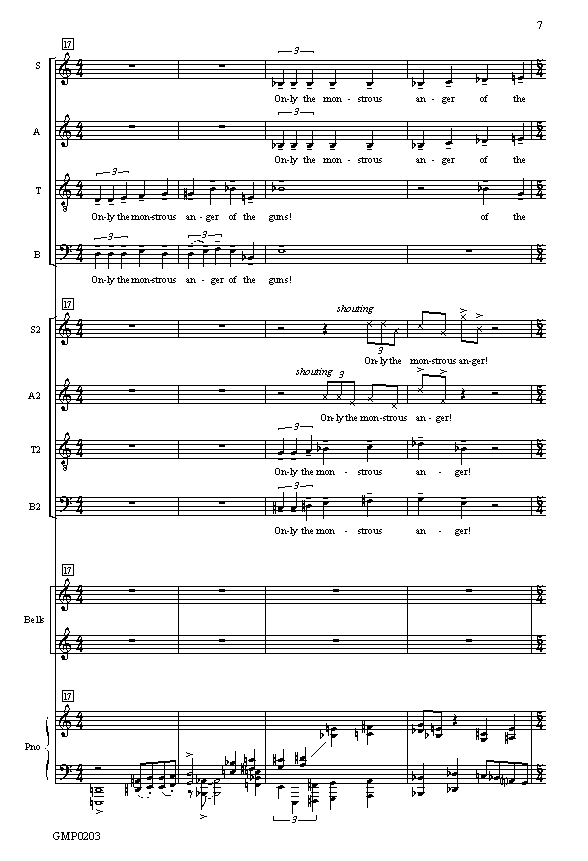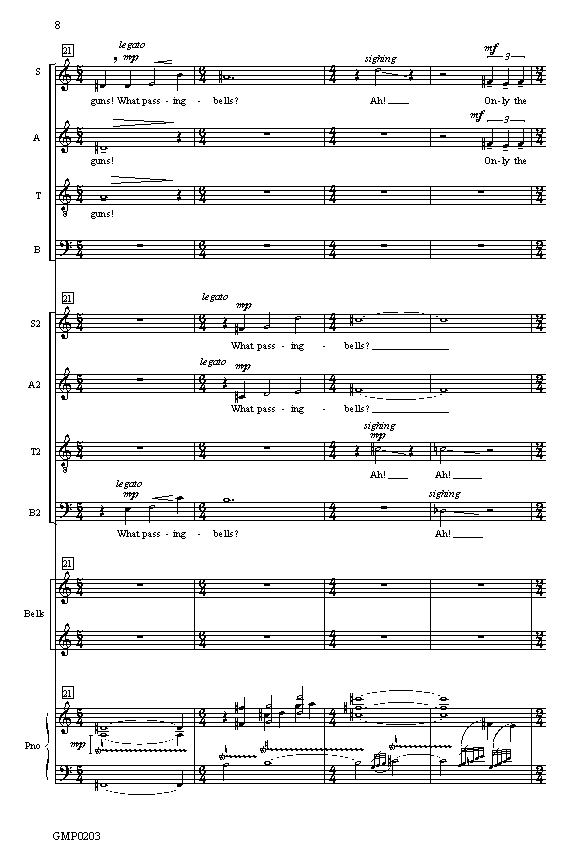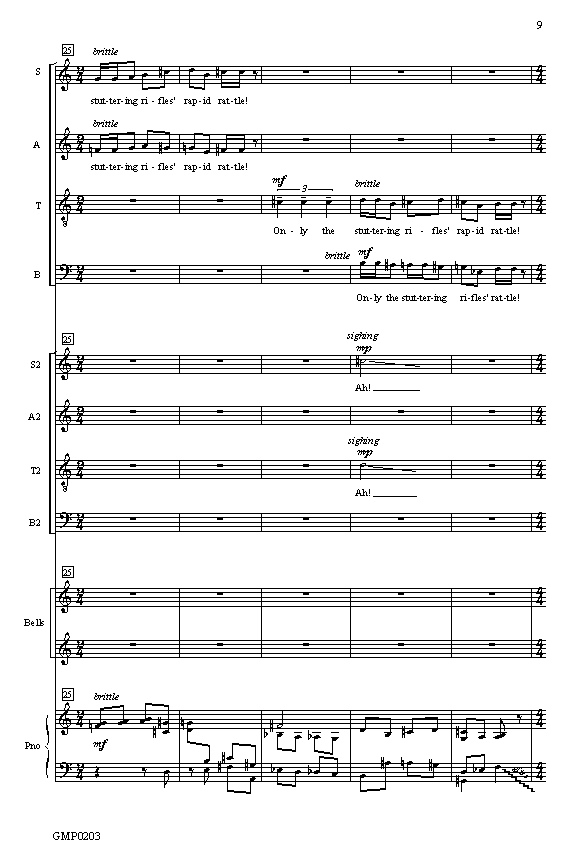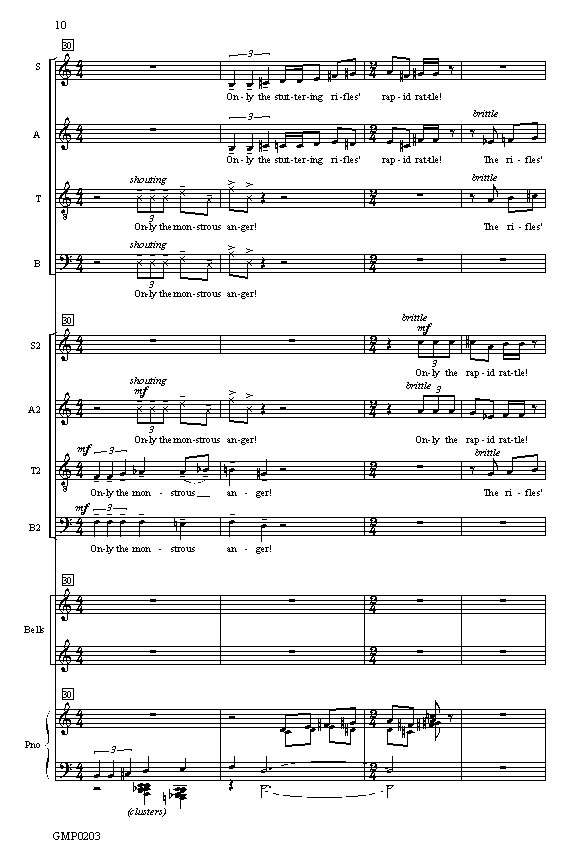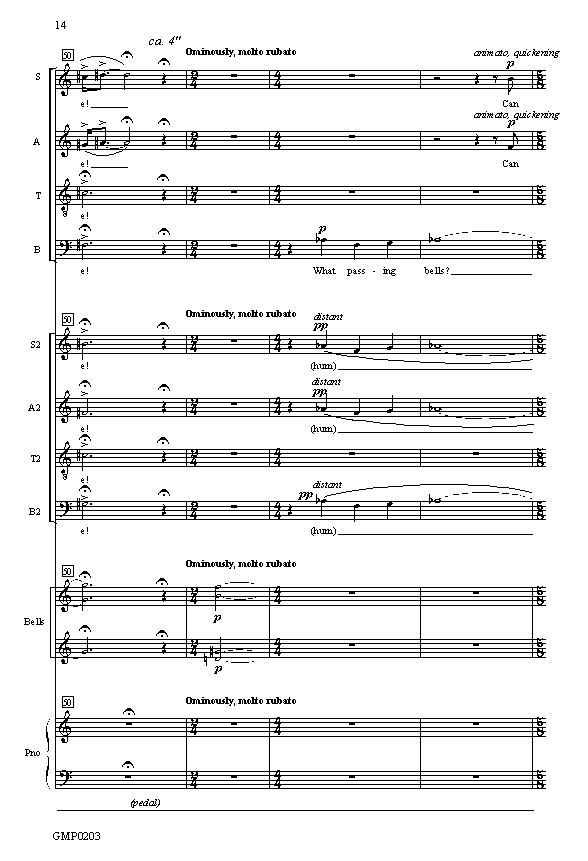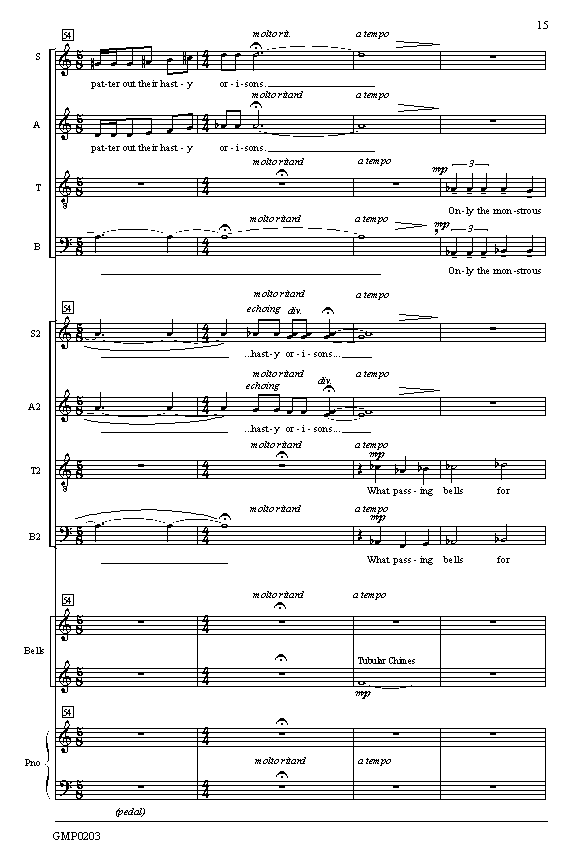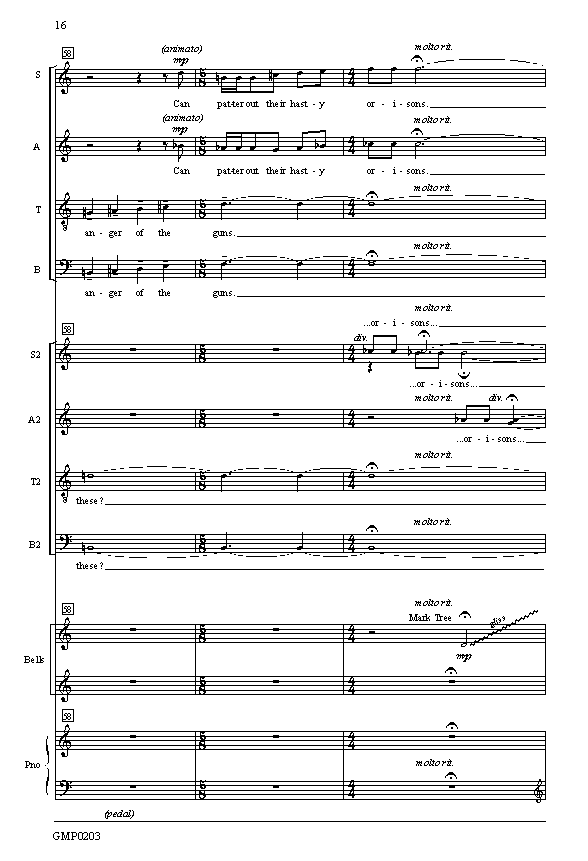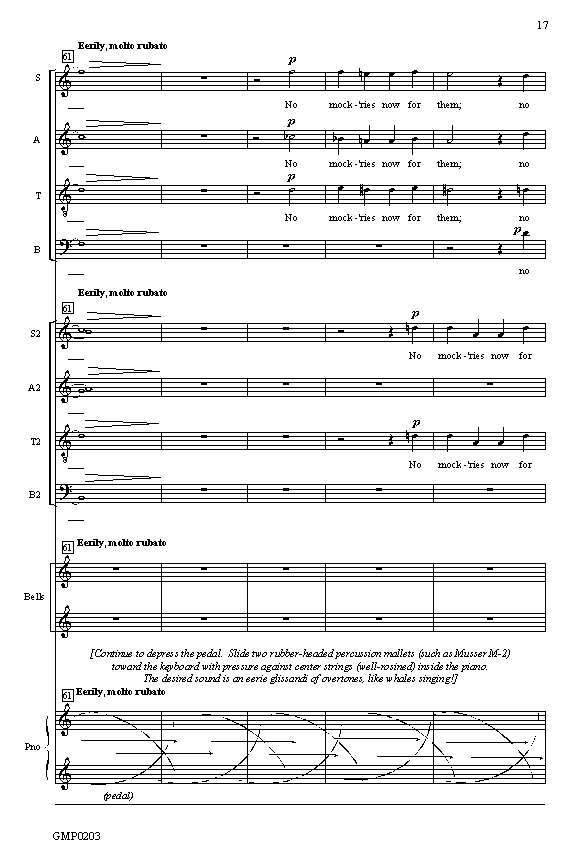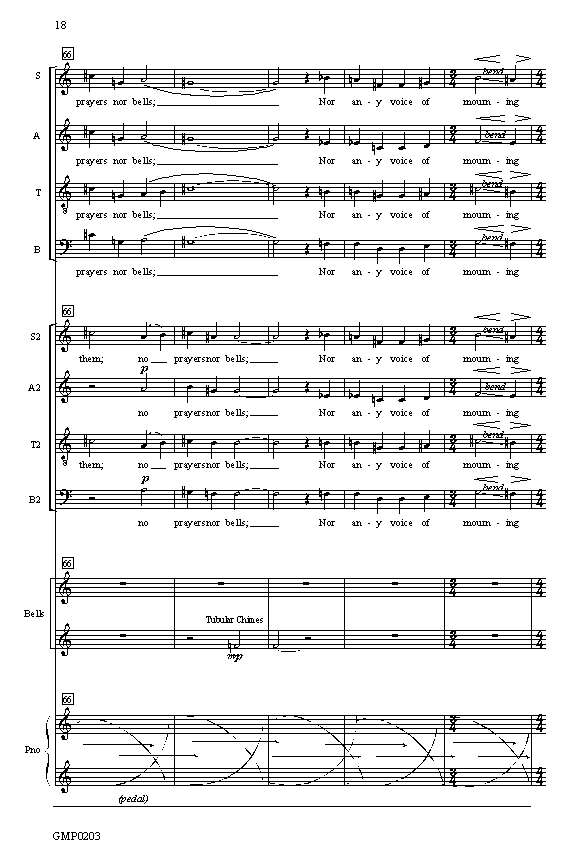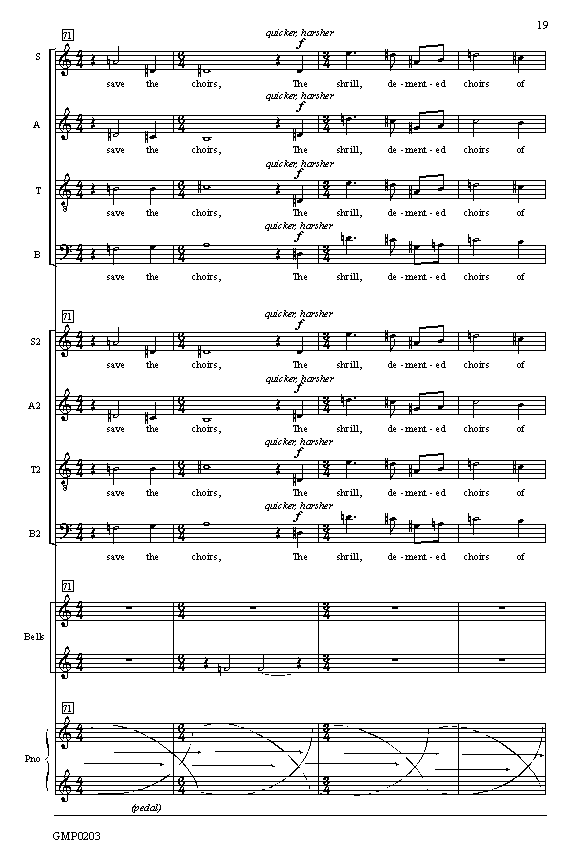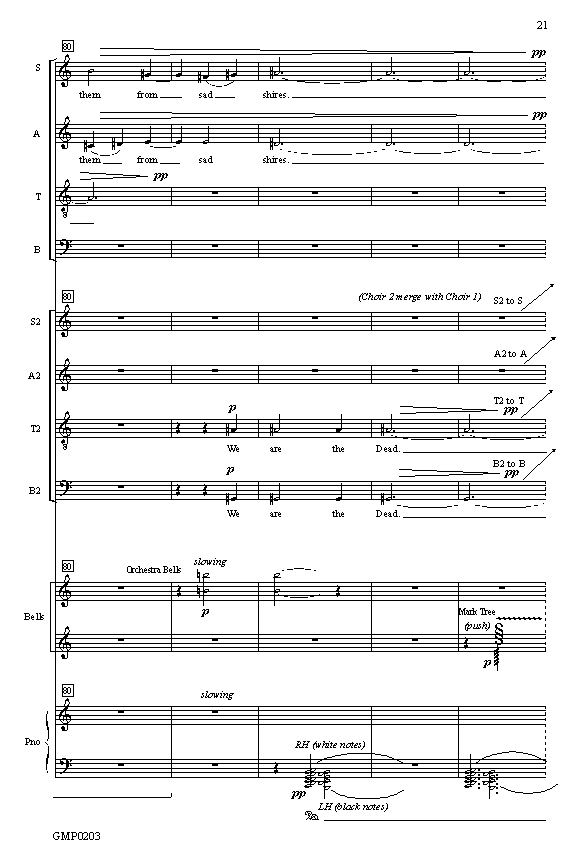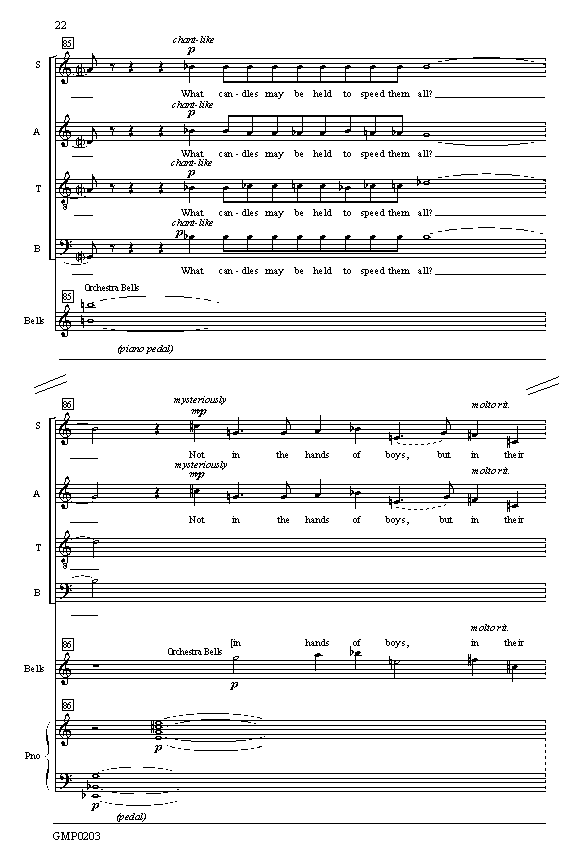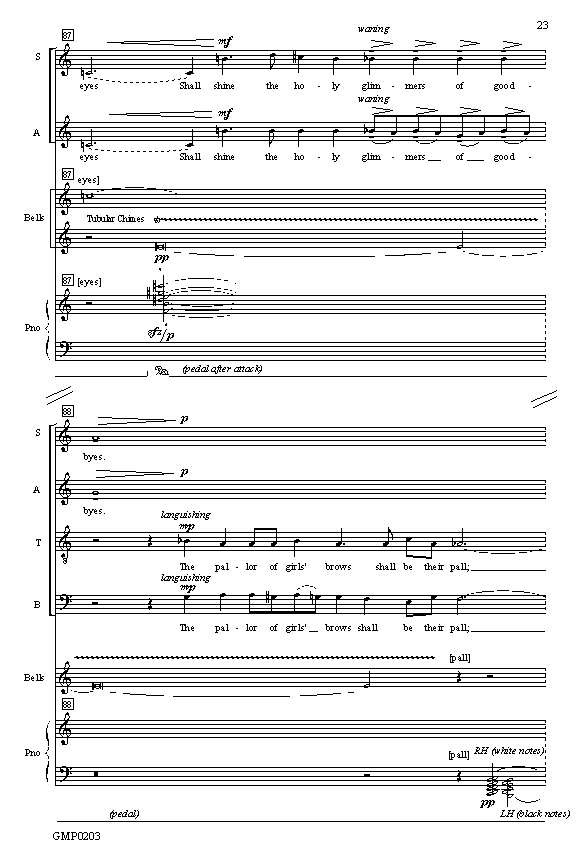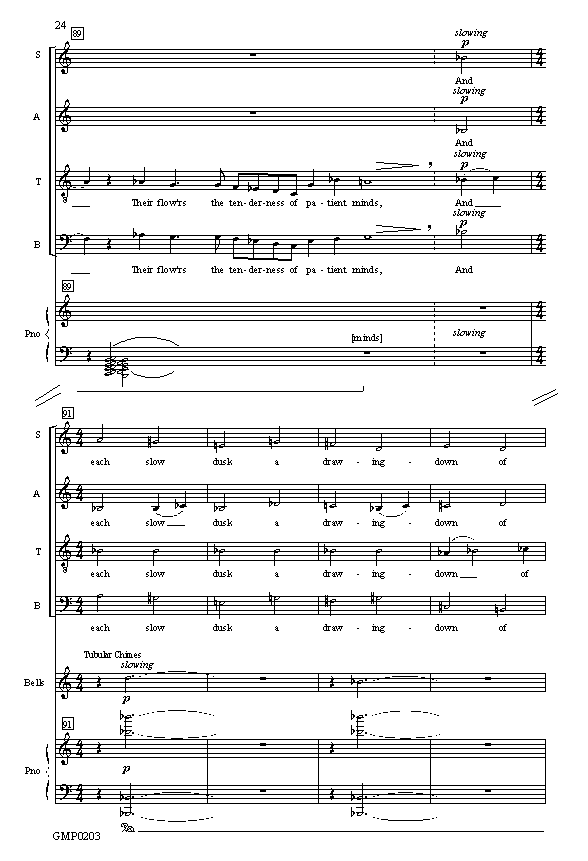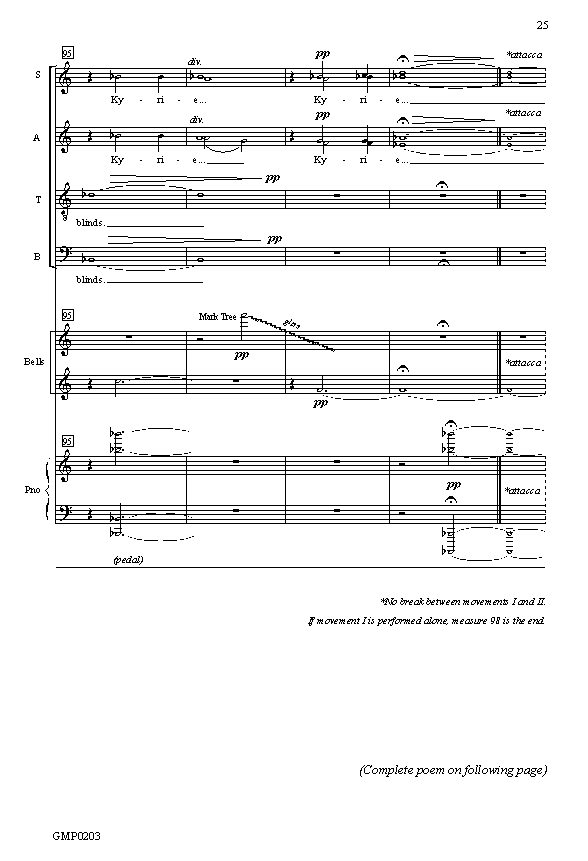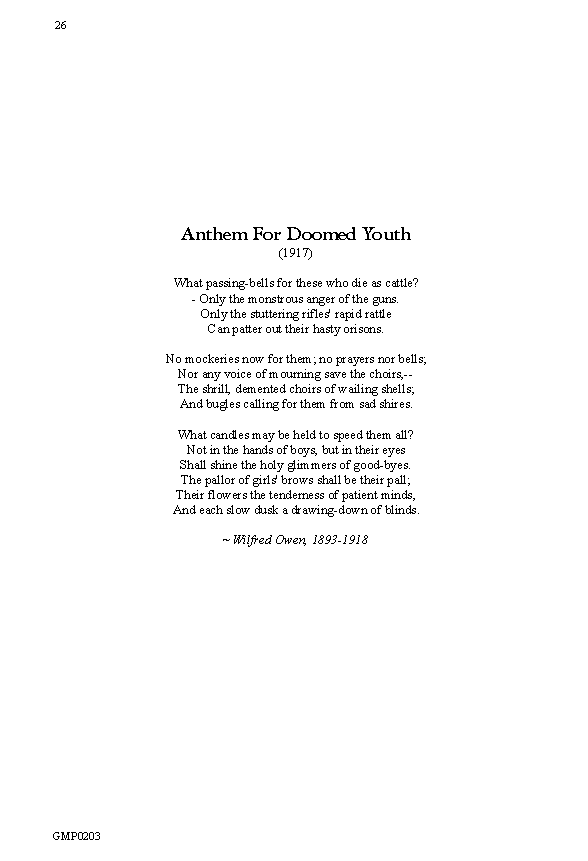|
The poem, Anthem For Doomed
Youth (click
here for an excellent analysis) was written in 1917 by Wilfred
Owen, a British officer killed in battle one week before the
war's end in 1918. He was only twenty-five years old at
the time of his death. Owen's poetry rose to international
prominence through its use in Benjamin Britten's War
Requiem. On November 11, 1918,
one week after Owen's death--at the eleventh hour of the eleventh day
of the eleventh month--bells were ringing in Shrewsbury to celebrate
the Armistice when the doorbell rang at his parent's home....a
courier delivering a telegram, telling them that their son was dead.
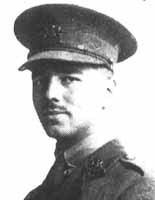
2nd Lt. Wilfred Owen |

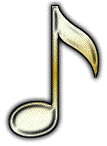 The
sounds and compositional techniques utilized in the music arise from
the severity and haunting sadness of the poetry. Extended
vocal and instrumental devices are used to enhance images suggested
by the words of the poem. Vocal devices include shouting,
sighing, cluster singing, pitch-bending, and non-metered
chant. Instrumental devices include trills and glissandi,
piano clusters, and piano overtones
produced with percussion mallets (click on the blue link for a live
sample of this effect at meas. 61 from the composer's 1976 *Serenade
for Flute, Cello, and Piano). The
sounds and compositional techniques utilized in the music arise from
the severity and haunting sadness of the poetry. Extended
vocal and instrumental devices are used to enhance images suggested
by the words of the poem. Vocal devices include shouting,
sighing, cluster singing, pitch-bending, and non-metered
chant. Instrumental devices include trills and glissandi,
piano clusters, and piano overtones
produced with percussion mallets (click on the blue link for a live
sample of this effect at meas. 61 from the composer's 1976 *Serenade
for Flute, Cello, and Piano).
 (Complete
*Serenade
with Brooks
de Wetter-Smith on Flute - and Brad Nelson on
"bowed" piano!) (Complete
*Serenade
with Brooks
de Wetter-Smith on Flute - and Brad Nelson on
"bowed" piano!) |


